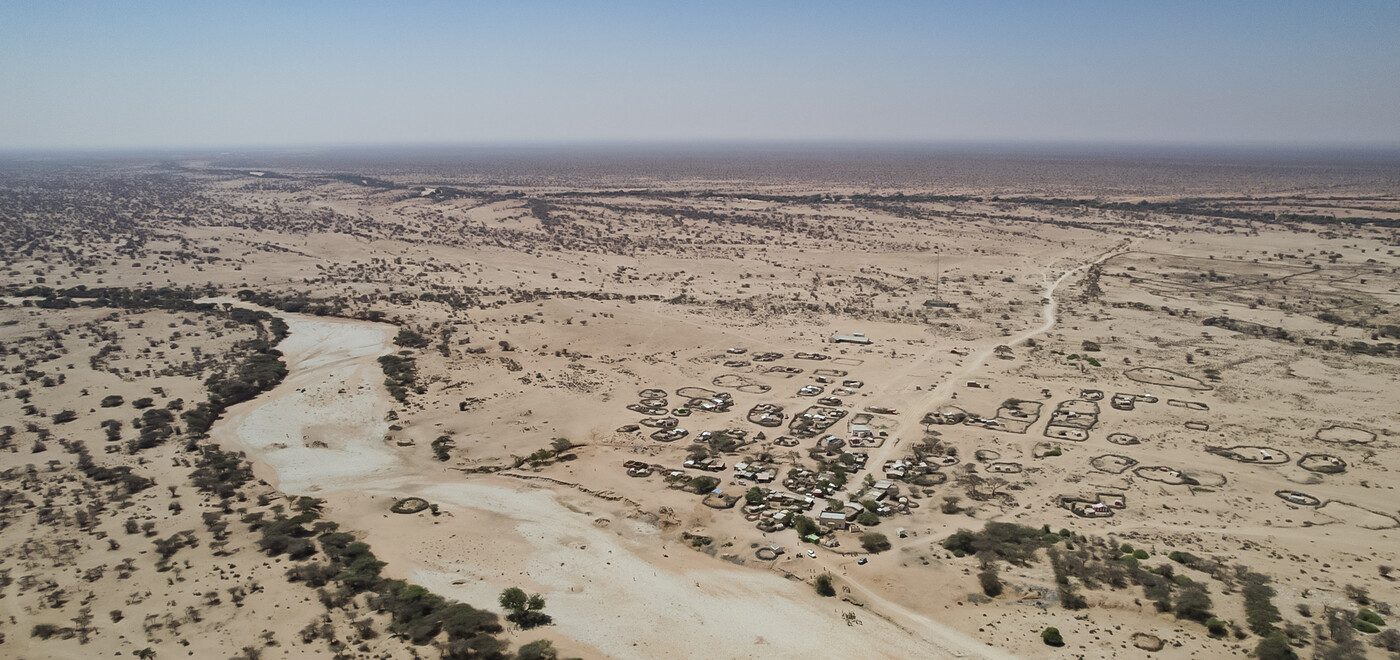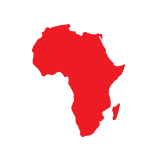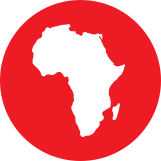The Horn of Africa drought threatens some 20 million people in Ethiopia, Kenya and Somalia facing severe hunger and water shortages. Global food prices had already reached record highs when the war on Ukraine began, due to the impact of the Covid-19 pandemic, climate disasters and rising energy costs. Ceel-Dheere, a rural pastoralist community located around 45km (2-hours’ drive) northeast of Burao, Somaliland, has been severely impacted by one of the worst droughts on record in the region and many families are on the very brink of survival.
The surrounding landscape of Ceel-Dheere is an immediate indicator of the impact of drought here, with a once-flowing vast river now carving a deep, dry scar through the heart of the community. It’s been over two years since Ceel-Dheere experienced significant rainfall and while they wait for the rains to come again, men in the community attempt to dig shallow wells with their bare hands, sometimes almost 36 meters down, but lately there is no water to be found.
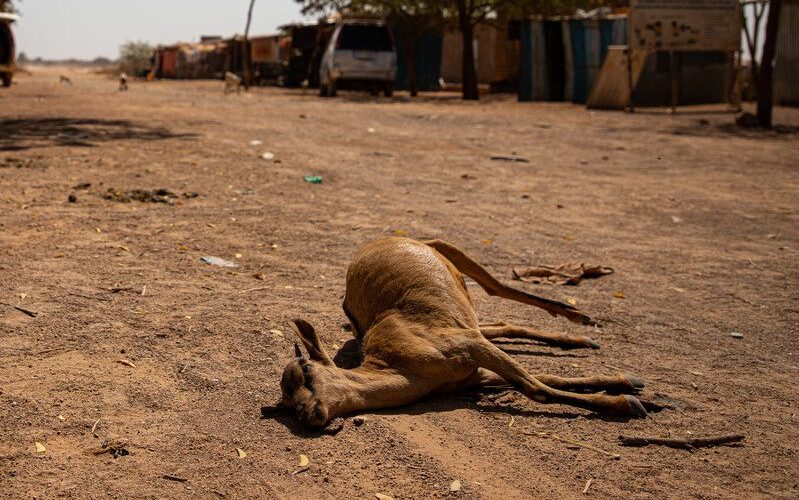
One lifeline, however, is a functioning shallow well that’s owned by a single individual from whom the 3,000 households who occupy Ceel-Dheere can purchase water from. It costs $50 per barrel and is mainly used for the purpose of drinking water for the community but must also be rationed for livestock. Whilst this is vital for the community’s survival, it is simply not sufficient – only 5 barrels can be fetched at a time, and access is limited to once every seven days for each household who are able to afford the cost. Despite the limitations, the community’s generosity to one another and the well-oiled operation of the well ensures there is no conflict surrounding access to water.
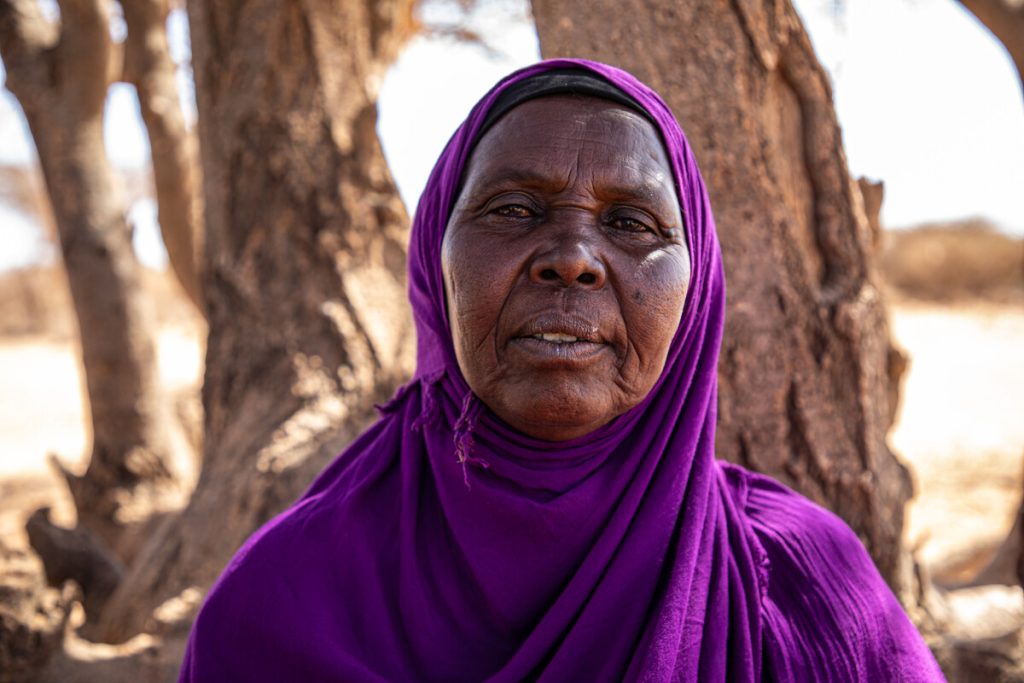
Once a green oasis with livestock grazing anywhere one would look, drought has brought pastoralism in Ceel-Dheere to its knees. Fadumo Ahmed Ibrahim, 50, who was displaced by previous droughts and sought refuge in Ceel-Dheere, paints a stark comparison of life before and during a drought:
“Before it was beautiful, the leaves were healthy when it rained. I feel good. My eyes feel pleasure and my mind becomes stress free. It is beautiful, and our livestock got bigger and produced more milk. I was a herder. I owned about 100 to 200 heads of livestock. Only about five survived from the drought…”
Halimo Ahmed Yusuf, 45, is a pregnant mother and ex-pastoralist, native to Ceel-Dheere. Drought took the majority of her livestock, and subsequently her milk and meat business. Without any means of income, Halimo is forced to spend her days searching far and wide for water to give her family:
“We don’t have easy access to water here in Ceel-Dheere and water tanks are sometimes in far-away locations. It can take me five hours to get water, and sometimes it happens that I don’t get any. Thirst is a problem – our babies cry because of it.”
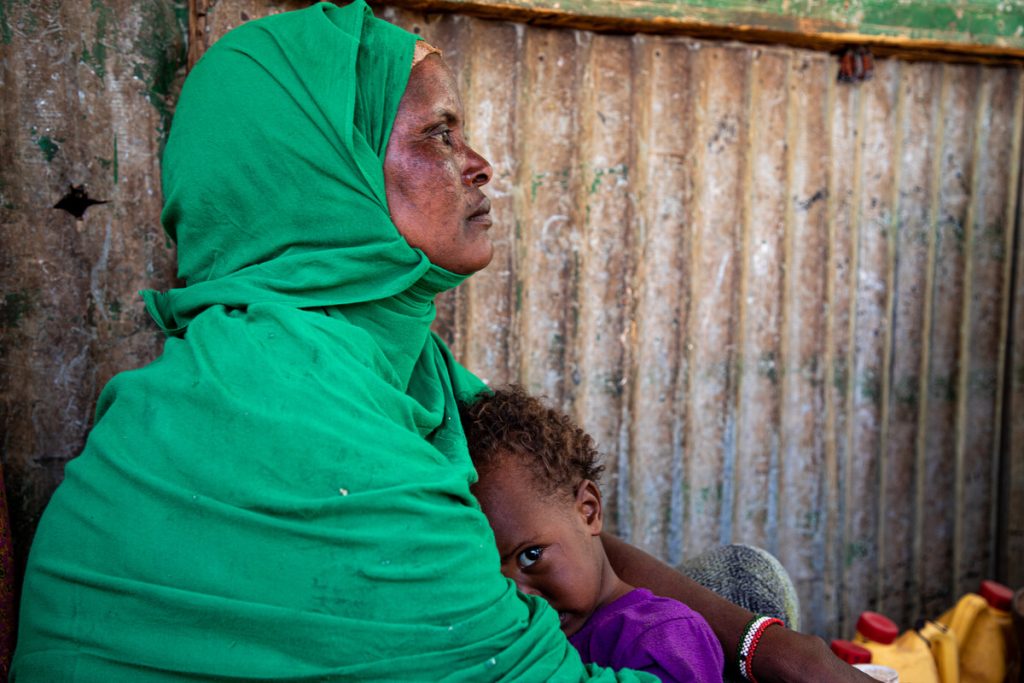
Whilst some livestock remain throughout Ceel-Dheere, most are either sick, dehydrated or malnourished. The community are unable to slaughter them for meat, or sell due to their poor condition or milk as a result of the complete lack of pasture. Many idly dot the surrounding landscape, most notably two declining camels unable to stand from total exhaustion. Despite the apparent futile efforts in caring for the sick animals, the community still pulls together by bringing food and water to them and setting fires as night falls to keep away hungry hyenas.
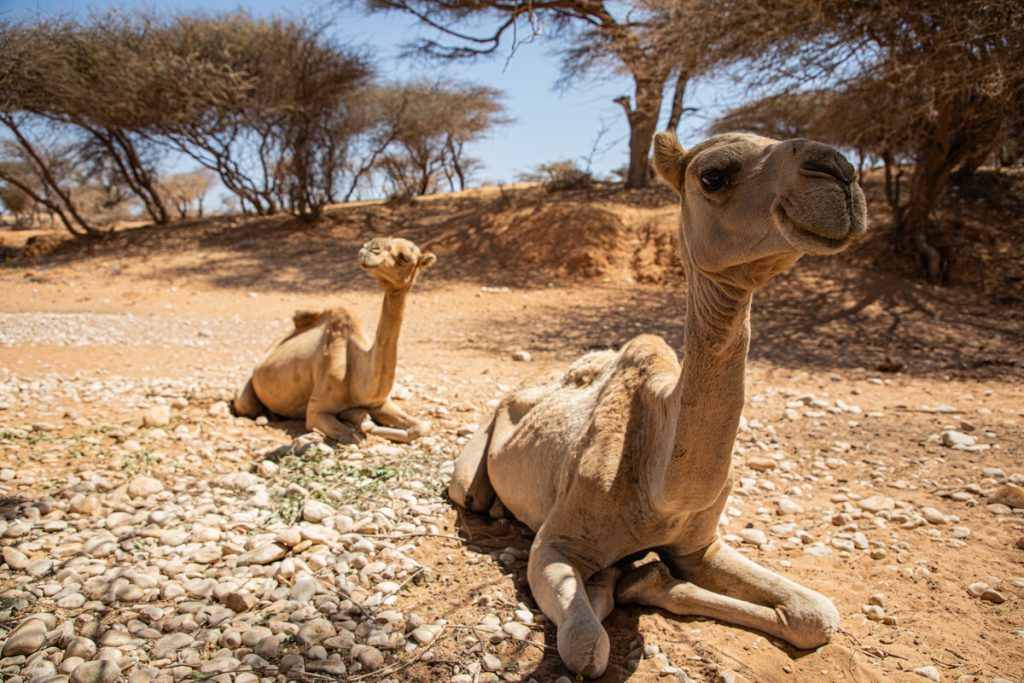
From April to December 2021, ActionAid supported Ceel-Dheere with unconditional cash transfers – an emergency project in partnership with the WFP that supported 200 households with $60 per month. There are currently plans to repeat this response with the same 200 households. Donate now to support communities facing hunger in East Africa.
Read about other communities living through the East Africa Food Crisis:
